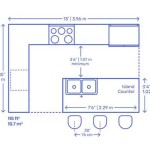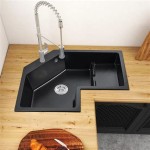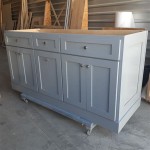Delta Kitchen Faucet Aerator Replacement: A Comprehensive Guide
A functional kitchen faucet is crucial for daily tasks, and a properly working aerator is an integral component. The aerator, typically found at the faucet's tip, mixes air with water, creating a smooth, non-splashing stream. Over time, aerators can become clogged with mineral deposits, debris, or limescale, resulting in reduced water flow, inconsistent spray patterns, or even complete blockage. Replacement of the aerator is a relatively simple and inexpensive task that can significantly improve faucet performance. This article offers a detailed guide to replacing a Delta kitchen faucet aerator, covering necessary tools, step-by-step instructions, and troubleshooting tips.
Delta Faucet Company is a prominent manufacturer known for its diverse range of kitchen faucets. These faucets often incorporate proprietary mechanisms for aerator attachment, although the fundamental principle remains the same. Therefore, it is essential to identify the specific Delta faucet model when sourcing a replacement aerator. The model number is generally located on the faucet itself, often near the base or underneath the spout. Consulting the Delta Faucet website or contacting their customer service can help confirm the correct aerator type for a given model.
Before commencing the replacement process, it is important to gather the necessary tools and materials. These include a new Delta replacement aerator (matching the faucet model), a faucet aerator wrench (often a plastic or rubber tool designed to grip the aerator without damaging the finish), adjustable pliers (optional, but can be helpful for stubborn aerators), a soft cloth or towel (to protect the faucet finish), white vinegar (for soaking a heavily calcified aerator), and a small container or bowl to catch any water or debris.
Preparation: Shutting Off the Water Supply
The initial step in replacing a Delta kitchen faucet aerator involves shutting off the water supply to the faucet. This prevents water from flowing during the removal and re-installation process. Locate the shut-off valves underneath the kitchen sink. These valves are typically connected to the hot and cold water supply lines leading to the faucet. Turn both valves clockwise until they are completely closed. To verify that the water is shut off, briefly turn on the faucet. If water continues to flow, double-check that the valves are fully closed or consider shutting off the main water supply to the house, prioritizing this only when the under-sink valves are dysfunctional, and alerting other household members beforehand.
Once the water supply is securely shut off, proceed to the next step. Placing a towel or small container beneath the faucet is recommended to catch any residual water that may be present in the faucet or aerator. This helps prevent water damage to the sink or surrounding areas.
Removal: Detaching the Old Aerator
The removal process can vary slightly depending on the specific Delta faucet model and aerator design. Many Delta faucets utilize a hidden aerator that is designed for easy removal with a specialized aerator wrench or key. These wrenches are typically made of plastic or rubber and are designed to fit precisely into the slots or grooves on the aerator. Insert the aerator wrench into the aerator and gently turn it counterclockwise. If the aerator is heavily calcified or stuck, applying gentle but firm pressure may be necessary. Avoid using excessive force, as this could damage the aerator or the faucet itself.
For faucets with an exposed aerator, adjustable pliers may be required. Wrap the aerator with a soft cloth to protect the finish from scratches or damage caused by the pliers. Gently grip the aerator with the pliers and turn it counterclockwise. Again, avoid using excessive force and ensure the pliers are securely gripping the aerator to prevent slippage.
If the aerator is particularly stubborn and resistant to removal, consider soaking it in white vinegar. White vinegar is a mild acid that can help dissolve mineral deposits and limescale. Fill a small container with white vinegar and submerge the aerator for several hours or even overnight. After soaking, try removing the aerator again using the aerator wrench or pliers. The vinegar should have loosened the deposits, making removal easier. Sometimes, applying penetrating oil, specifically designed to loosen corroded parts, can aid in the loosening process. Allow the oil to sit for the recommended time before attempting extraction.
Once the aerator is removed, inspect the faucet spout for any remaining debris or mineral deposits. Clean the inside of the spout thoroughly with a soft cloth or brush. This ensures a clean and unobstructed flow of water when the new aerator is installed.
Installation: Securing the New Aerator
Before installing the new aerator, compare it to the old one to ensure it is the correct size and type. Most Delta replacement aerators come with O-rings or rubber gaskets. Ensure that these are properly seated on the aerator. These O-rings create a watertight seal between the aerator and the faucet spout. If the old O-rings are damaged or missing, replace them before installing the new aerator.
Insert the new aerator into the faucet spout. For faucets with a hidden aerator, use the aerator wrench to tighten the aerator clockwise. For faucets with an exposed aerator, tighten the aerator by hand or with pliers (again, protecting the finish with a soft cloth). Do not overtighten the aerator, as this can damage the aerator or the faucet housing. A snug fit is sufficient to create a watertight seal, using the appropriate and recommended grip force to achieve this.
After installing the new aerator, turn the water supply back on by opening the shut-off valves under the sink. Slowly turn the valves counterclockwise until they are fully open. Check for any leaks around the aerator. If any leaks are present, tighten the aerator slightly. If the leaks persist, remove the aerator and inspect the O-rings or gaskets. Ensure they are properly seated and undamaged. If necessary, replace the O-rings or gaskets. After ensuring the water flows smoothly and there are no leaks, run the water for a few minutes to flush any remaining debris from the faucet and aerator.
Consider carefully calibrating the water flow during this initial operation check, evaluating if the resulting flow rate is within acceptable parameters for the faucet model in question, and adjusting if necessary via adjusting the aerator itself, if provided by design, or considering alternative aerator components.
In instances where the problem persists, consider carefully inspecting the faucet assembly itself for cracks, deformations, or other defects, as these issues can often mimic or exacerbate aerator-related problems requiring potentially more extensive repairs or complete faucet replacement.
Finally, properly dispose of the old aerator according to local waste disposal guidelines. Some local municipalities may have specific recycling programs for plumbing components. Consult with the local waste disposal authority or check online resources for guidance on proper disposal or recycling options.
Through diligent adherence to the above procedure, replacing a Delta kitchen faucet aerator becomes a relatively simple endeavor, yielding substantial enhancement to the faucet's throughput and overall efficacy.

Delta Rp61342ss Stainless Aerator

Aerator 2 Gpm

Delta 1 5 Gpm Aerator Rp52216

Delta Rp76076 Aerator Wrench

Delta Water Efficient Aerator 1 5 Gpm In Chrome Rp19754

Neoperl 13 16 In 27 Pca 1 2 Gpm Delta Water Saving Hidden Aerator With Key

Delta 2 Gpm Aerator For Talbott Pilar Waterfall And Victorian Faucets In Chrome Rp53998

Delta Rp79323

Neoperl 13 16 In 27 Pca 1 2 Gpm Delta Water Saving Hidden Aerator With Key 37 0356 98 The Home

Aerator








